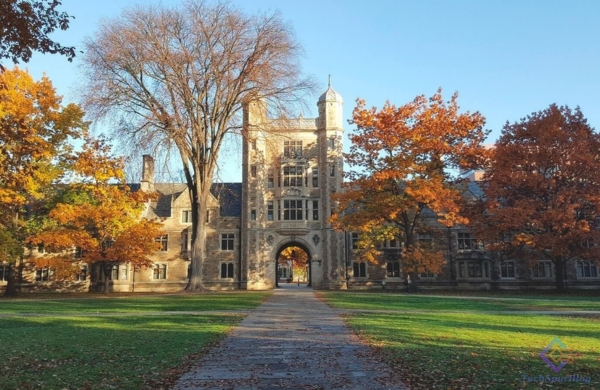
The University of Michigan (U of M), located in the picturesque city of Ann Arbor, is one of the United States’ premier institutions of higher education. Its rich history, tradition of academic excellence, and profound impact on society make it a cornerstone of American education. Let’s delve into the compelling story of how this prestigious institution came into existence and explore its enduring legacy.
Founding and Early Years
The origins of the University of Michigan can be traced back to 1817 when the Michigan Territory was established. The territorial government recognized the need for a public university to provide education and research opportunities for its residents. On August 26, 1817, the territorial governor, Lewis Cass, signed the charter for the Catholepistemiad, or University of Michigania. This was the precursor to the modern U of M.
However, it wasn’t until 1837, when Michigan became the 26th state in the Union, that the University of Michigan was officially established by the state constitution. In that same year, Ann Arbor was selected as the site for the new university, and construction began on its first building, which would later be known as Mason Hall.
The first classes at the University of Michigan began in 1841, and its early curriculum focused on classical studies, medicine, and law. One of the university’s founding principles was to provide an education that was both broad and practical, emphasizing the importance of both the liberal arts and professional fields.
Also Read: Enhancing Student Learning Through Constructivist Teaching Strategies
Academic Excellence and Expansion
Throughout the 19th and early 20th centuries, the University of Michigan steadily grew in size and reputation. It became known for its rigorous academic programs, a commitment to research, and the quality of its faculty. In 1850, U of M became one of the first American universities to establish a chair of engineering. This marked the beginning of its strong emphasis on science and technology.
The university continued to expand its academic offerings and infrastructure, and by the early 20th century, it had established a comprehensive range of programs. The founding of professional schools, including the Law School and the Medical School, contributed to the university’s standing as a leading institution in these fields.
A Legacy of Innovation and Research
One of the most significant legacies of the University of Michigan is its tradition of innovation and groundbreaking research. The institution has been at the forefront of numerous scientific and technological advancements. Notably, in 1947, U of M was the site of the invention of the first practical application of radar by researchers in the Electrical Engineering Department.
The university’s commitment to research has led to numerous Nobel Prize winners among its faculty and alumni, across various fields such as physics, medicine, and economics. It’s also been a leader in fields like artificial intelligence, renewable energy, and biotechnology.
Social Impact and Civic Engagement
The University of Michigan has a strong tradition of civic engagement and social impact. It played a pivotal role in the Civil Rights Movement of the 1960s, with faculty members and students actively participating in protests and advocating for civil rights. The university continues to emphasize the importance of diversity and inclusion in its academic and social programs.
Furthermore, U of M has a strong commitment to public service and community outreach. Initiatives like the Ginsberg Center for Community Service and Learning facilitate students’ involvement in service projects and social justice causes, reinforcing the university’s dedication to making a positive difference in society.
Athletics and Traditions
The University of Michigan is known for its storied athletic programs, most notably its football team. The Michigan Wolverines have a passionate fan base, and the annual football clash with Ohio State University, known as “The Game,” is one of the most famous rivalries in sports.
The Michigan Marching Band, often referred to as “The Pride of the Midwest,” is another cherished tradition at U of M. Their performances at football games and other events are a source of pride and excitement for the university community.
Also Read: Fostering Inclusive Classrooms through Culturally Responsive Teaching
Conclusion
The University of Michigan’s history and legacy are deeply intertwined with the growth and development of higher education in the United States. From its humble beginnings as a territorial university, it has evolved into a global institution of academic excellence and innovation. Its contributions to research, its commitment to social justice, and its enduring traditions have left an indelible mark on American education and society as a whole. The University of Michigan’s legacy is a testament to the power of education to shape the future and inspire generations of scholars and leaders.

Leave a Reply